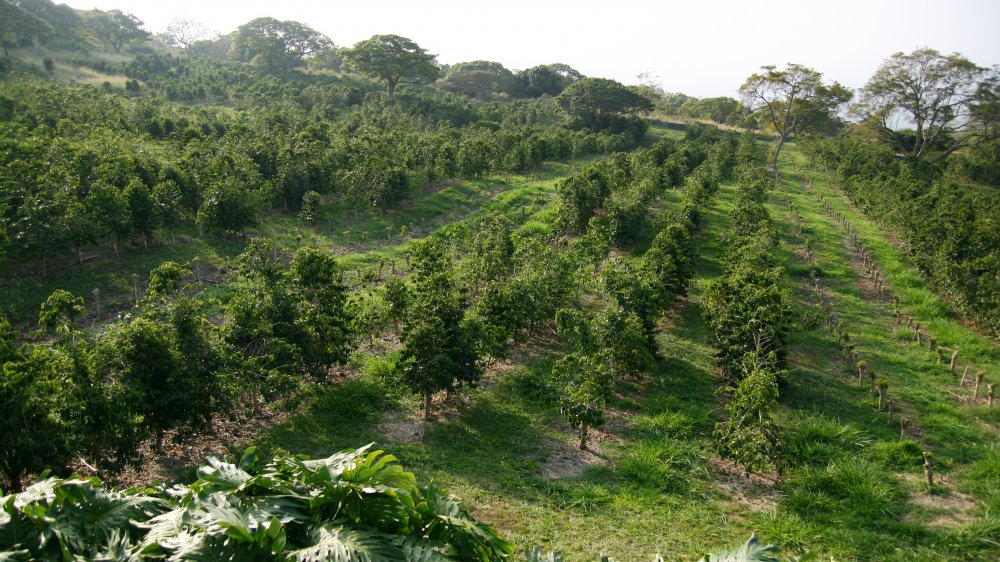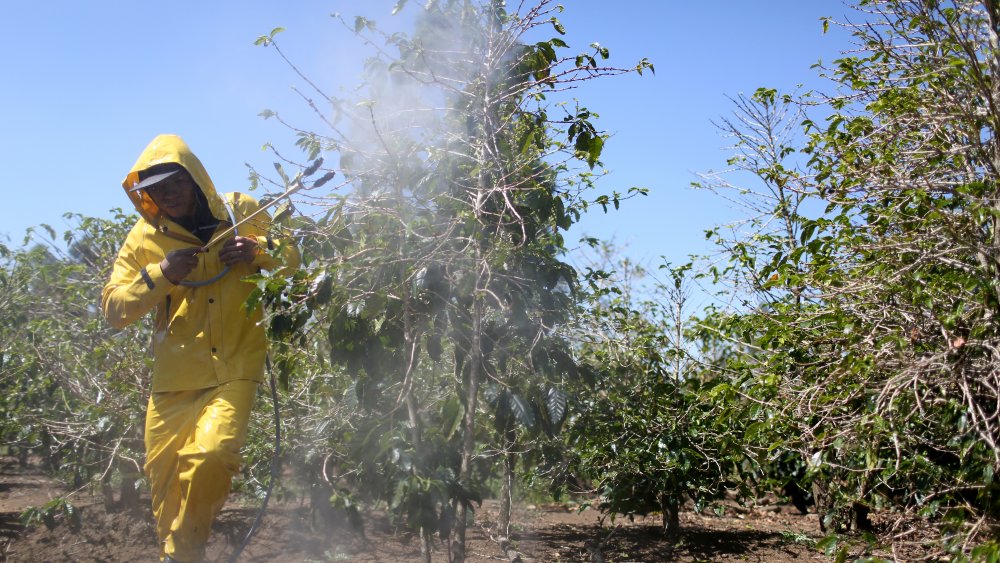The Scary Plant Disease Hawaii's Coffee Farms Are Now Battling
To get into Hawaii, says the Hawai`i Department of Agriculture, coffee plants are required to quarantine for an entire year, and state regulations impose a compulsory fumigation for imported green coffee beans before entry. These strict, coffee-related immigration measures are designed to prevent what has now become a frightening reality for coffee farmers in the island state.
Yellow-orange rust spots have started to appear on the topsides of coffee leaves in some parts of Maui. On their undersides, yellow and dark orange powdery patches are forming. The symptoms are telltale signs of the first confirmed cases of coffee leaf rust for the state. It's a debilitating disease that had, until now, touched all other major coffee-growing regions of the world except Hawaii. Agriculture officials are currently testing leaf samples from Hilo, Hawaii, to confirm whether or not coffee leaf rust has spread other areas and islands as well. Just how bad is it? "Coffee leaf rust is the most devastating pest known to coffee," Chris Manfredi, the president of the Hawaii Coffee Association, told Hawaii News Now, warning that, if untreated, the fungus could spell the end to Hawaii's coffee industry. In their October 30th statement, the Hawai`i Department of Agriculture confirmed that it is still not sure how the fungus snuck into the state.
How coffee rust could affect Hawaii's coffee industry
When, in 1869, coffee leaf rust was first detected on coffee plantations in what is now Sri Lanka, the area went from being the top coffee-producing colony in the world to producing almost nothing in just ten years. It was "a horrible, devastating epidemic — 90 percent, 100 percent crop loss," Purdue University professor of botany and plant pathology, Mary Catherine Aime, told The Atlantic. According to the Hawai`i Department of Agriculture, when left untreated, coffee leaf rust causes coffee leaves to fall off the plants prematurely. As a result, coffee berry growth can decline anywhere between 30 to 80 percent the following year
Just as no one is certain how the fungus worked its way into Hawaii, no one knows, says The Atlantic, how it got to the Americas to begin with. It spread somehow to the continents in the 70s, and then flared up again between 2012 and 2017. The disease forced nearly 2 million South and Central American farmers from their land in this five year period, leading to over $3 billion in losses. What, concretely, does this mean for Hawaii? The Hawai`i Department of Agriculture indicates that fungicides might help contain and combat coffee rust, but is urging coffee producers to practice impeccable hygiene, including "regular pruning," and "good weed control." Chris Manfredi told Hawaii News Now that The Hawaii Coffee Organization is also considering a switch to "rust-resistant" crops.

